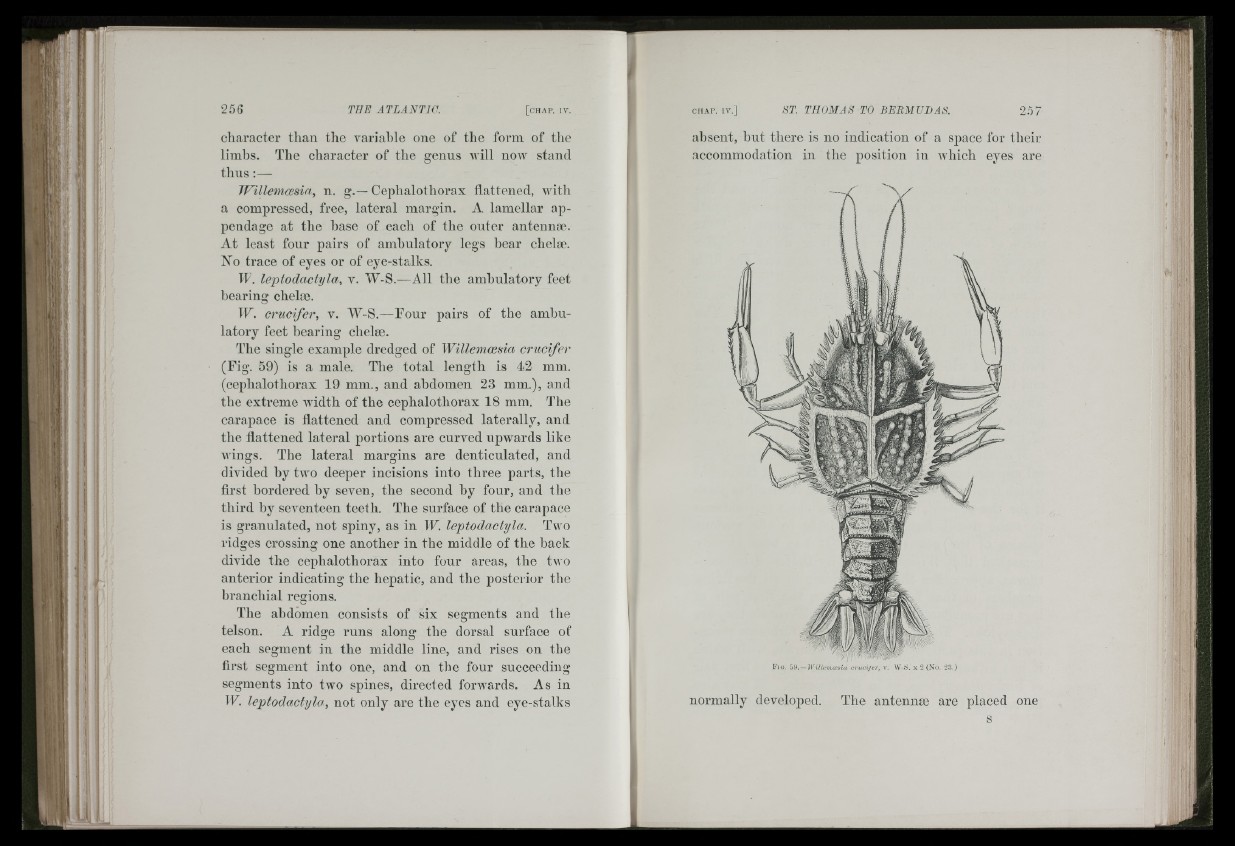
îl:
I li
iii
256 THE ATLANTIC. [ c h a p . IV .
character than the variable one of the form of the
limbs. The character of the genus will now stand
thus :—
JFillemoesia, n. g.—Céphalothorax flattened, with
a compressed, free, lateral margin. A lamellar appendage
at the base of each of the outer antennæ.
At least four pairs of ambulatory legs bear chelæ.
No trace of eyes or of eye-stalks.
W. leptodactyla, v. W-S.—All the ambulatory feet
bearing chelæ.
IF”, crucifer, v. AV-g.—Pour pairs of the ambulatory
feet hearing chelæ.
The single example dredged of Willemoesia crucifer
(Fig. 59) is a male. The total length is 42 mm.
(céphalothorax 19 mm., and abdomen 23 mm.), and
the extiæme width of the céphalothorax 18 mm. The
carapace is flattened and compressed laterally, and
the flattened lateral portions are curved upwards like
wings. The lateral margins are denticulated, and
divided by two deeper incisions into three parts, the
first bordered by seven, the second hy four, and the
third by seventeen teeth. The surface of the carapace
is granulated, not spiny, as in W. leptodactyla. Two
ridges crossing one another in the middle of the hack
divide the céphalothorax into four areas, the t\)o
anterior indicating the hepatic, and the posterior the
branchial regions.
The abdomen consists of six segments and the
telson. A ridge runs along the dorsal surface of
each segment in the middle line, and rises on the
first segment into one, and on the four succeeding
segments into two spines, direef ed forwards. As in
W. leptodactyla, not only are the eyes and eye-stalks
C H A T . IV . ] ST. THOMAS TO BERMUDAS. 257
absent, hut there is no indication of a space for their
accommodation in the position in which eyes are
LU
111
F i u . i ÿ . — W ilUm oe siM c ru -n je r, v. W-ci. x 2 (N o . 2 3 .)
normally developed. The antennæ are placed one
s